Quite ‘fawned’ of Deer?
Wandering around the reserve at this time of year you will have likely spotted some deer grazing in the woodland. This guide should help you identify which species you are looking at!
Starting with the most likely: fallow deer. Fallow deer coats come in a variety of colours and patterns. You will also find the menil variety which are brown/tan coloured and have white spots all year. There are others with similar coats in summer however this time of the year the tan colour and spots darken making them very hard to see.
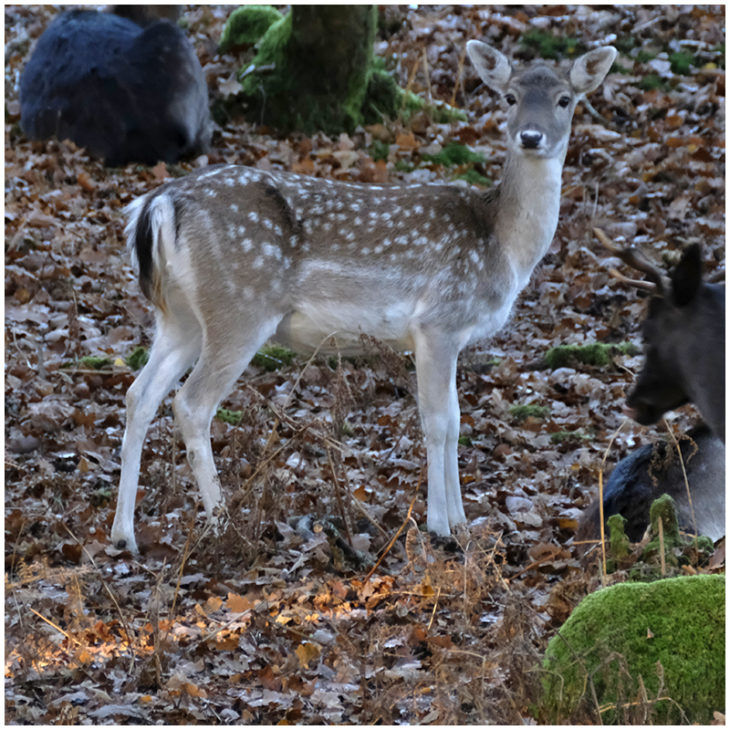
One of the most striking to catch are the black or melanistic which is almost entirely black all year round. You may also see a white coat (leucistic) standing out like a sore thumb. These deer are not albinos, it is just a natural coat coloration, albeit uncommon, in wild fallow deer.
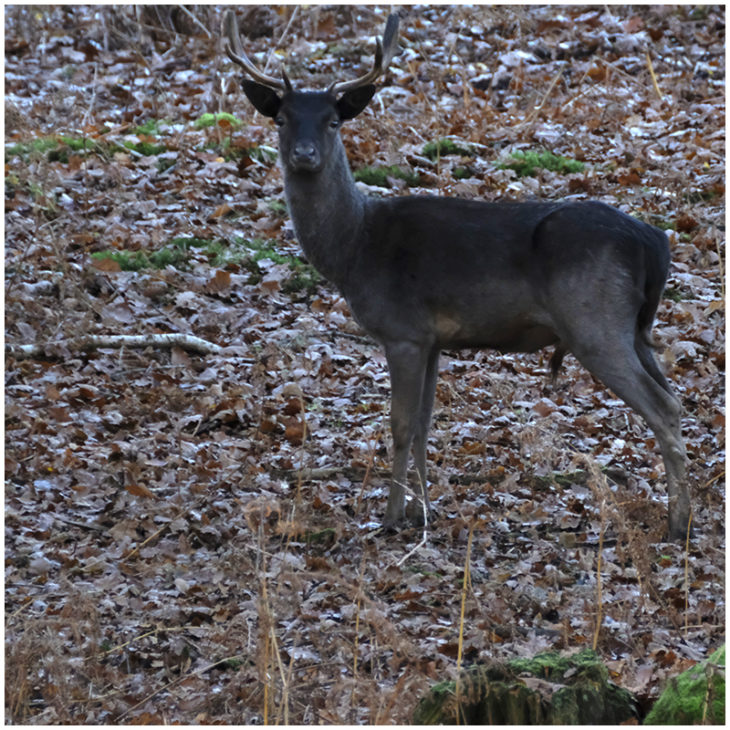
Another key identification tool you can use until around May when they fall off are their antlers. Fallow deer are the only deer species in the UK that have palmate antlers. This means the space between the points of the antlers are filled in, so the antlers appear broad. The rump is white with a long tail and a black horseshoe pattern. This is handy to remember as deer are easily spooked as, in my experience, you often just catch them as they run away.
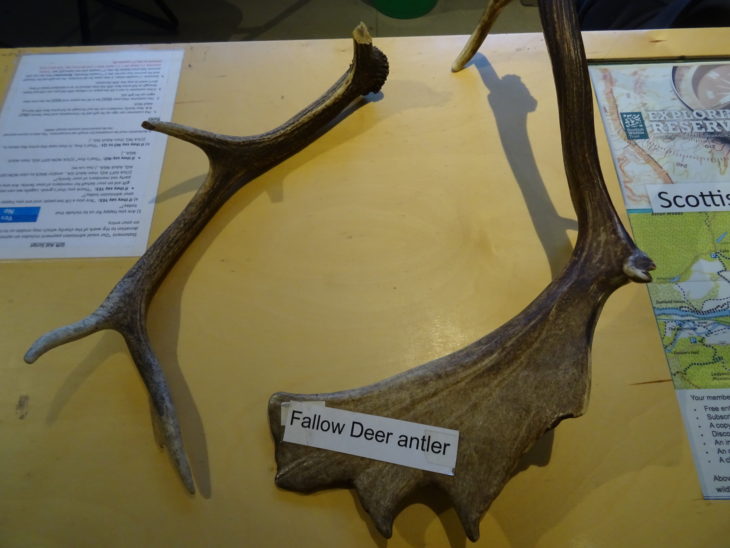
Right- Fallow deer antler
Fallow deer are a non-native species to the UK. In this area we have the biggest population of fallow in Scotland. Have a look into the woods on the left hand side as you head down to the Visitor Centre because you can usually spot a few. They can also occasionally be seen from the hides wandering through the woods. As with all the deer mentioned in this blog, they are generally most active at dawn and dusk (crepuscular).
Roe deer are smaller than fallow. Their coats are dark brown and grey at this time of year but will brighten in spring to a red colouration. Young roe deer are also spotted for the first couple of years. Their tail is almost invisible, camouflaged by the white rump. They have a white chin with what looks like a black moustache on the snout. Roe deer antlers are short, roughly 10 inches, and spikey which are shed around this time of year.
Roe deer are a native species to the UK and are associated with woodlands all over Scotland. Due to their size, they are very good at getting through fences and notoriously hard to keep out of forest planting areas where they will graze.
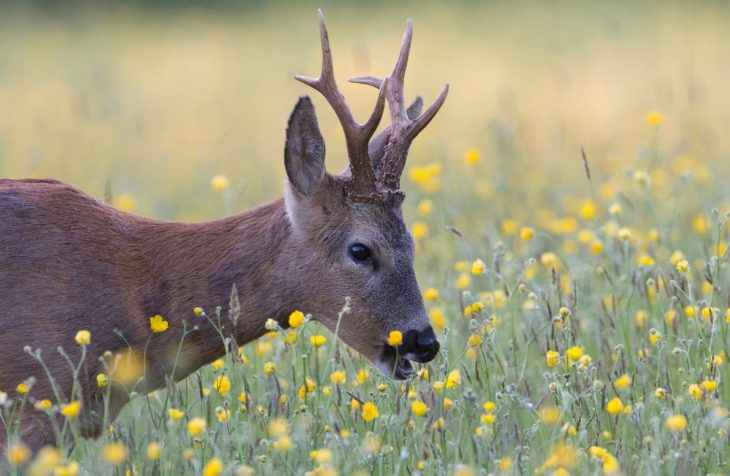
The native red deer are the largest in Scotland and can be seen throughout highland Perthshire. Similar coat colourations to the roe, with a brownish-grey coat in winter which brightens, turning red, but you do find a lot of colour variation. The tail is white and rounded, often with a dark streak down the centre. The calves are usually brown with white spots. This time of year the adult males sport their large antlers until they fall off after February, with the younger males losing them later.
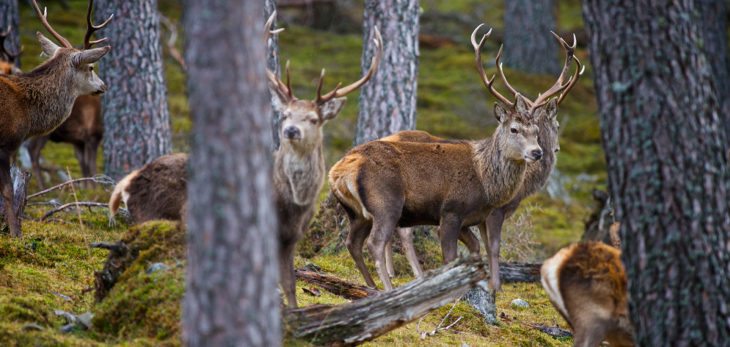
Roughly the same time each year you can see a pack of reindeer speeding over Scotland, one with an easily identifiable red nose. You can visit a herd in the Cairngorms near Aviemore.
I always have issues remembering the proper terms for the sexes and juveniles of each species so here is a table to make it a little bit easier.

On the loch we have watched as the various animals deal with the ice which has mostly melted at this point. We have also had two cormorants spending some time on the loch which have been fun to watch. Varying numbers of wigeon, goldeneye and tufted ducks keep appearing. A flock of mute swans have also been stopping in with a juvenile which is always nice to see.
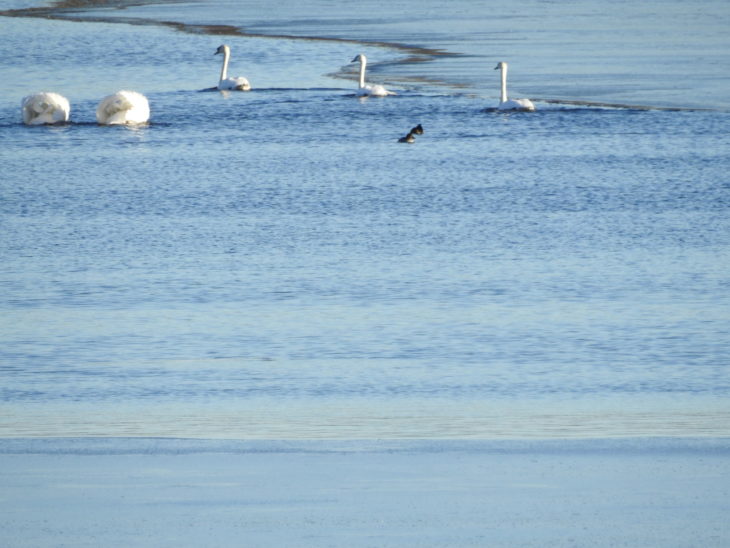
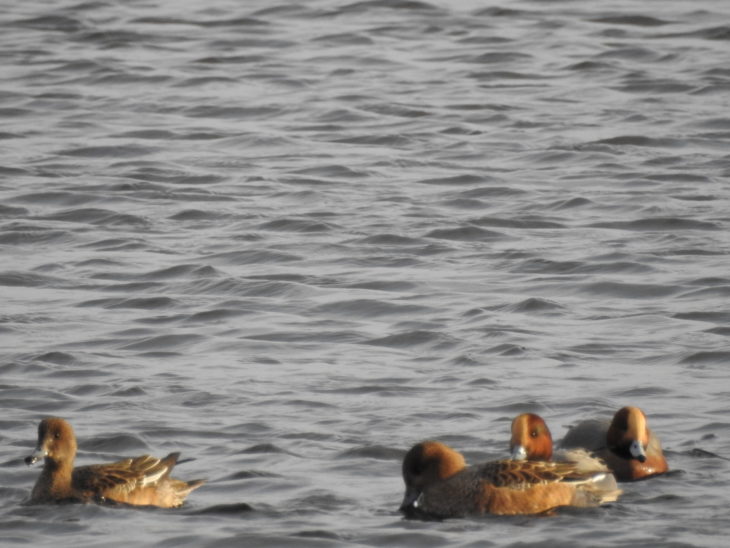
At the feeders we see a lot of squirrel activity and very frequent visits from woodpeckers. We have also had a male yellowhammer stopping by. Usually, at this time of year, they feed on the fields in flocks but we aren’t complaining.
Unfortunately we are having a problem with our webcams. It is a busy time (with the holidays etc) but we will hopefully have them up and running very soon.
Huge thank you to all the volunteers who are coming up to make sure the feeders are full over the Christmas period.
From myself and everyone at Lowes, hope you all have a great Christmas!
Christy
Visitor Centre Assistant
Help protect Scotland’s wildlife
Our work to save Scotland’s wildlife is made possible thanks to the generosity of our members and supporters.
Join today from just £3 a month to help protect the species you love.
Preface
Wandering around the reserve at this time of year you will have likely spotted some deer grazing in the woodland. This guide should help you identify which species you are …
